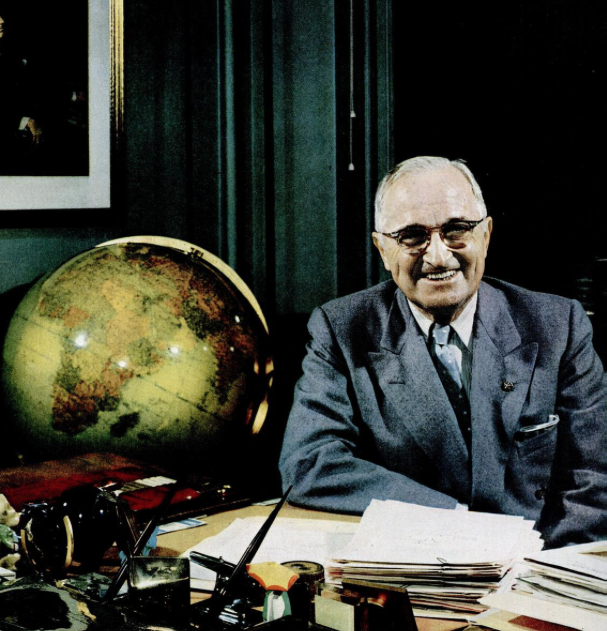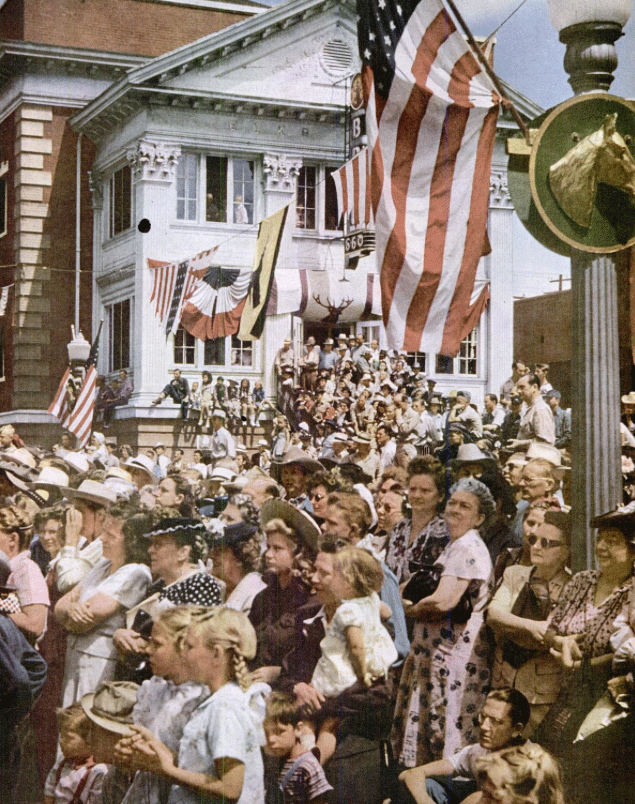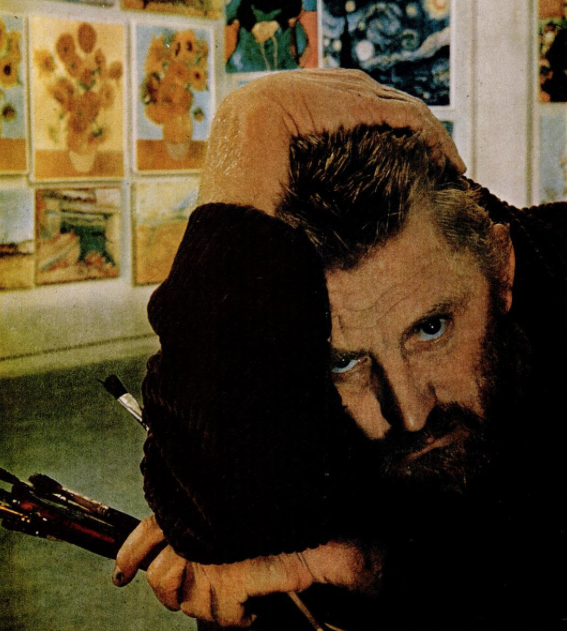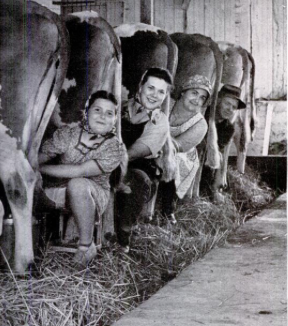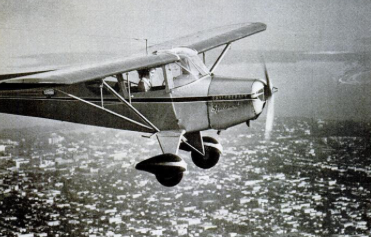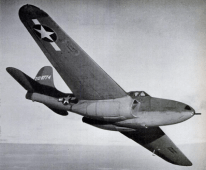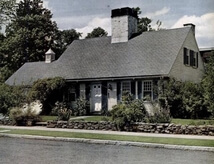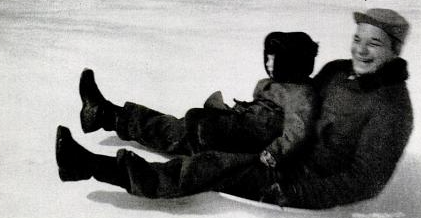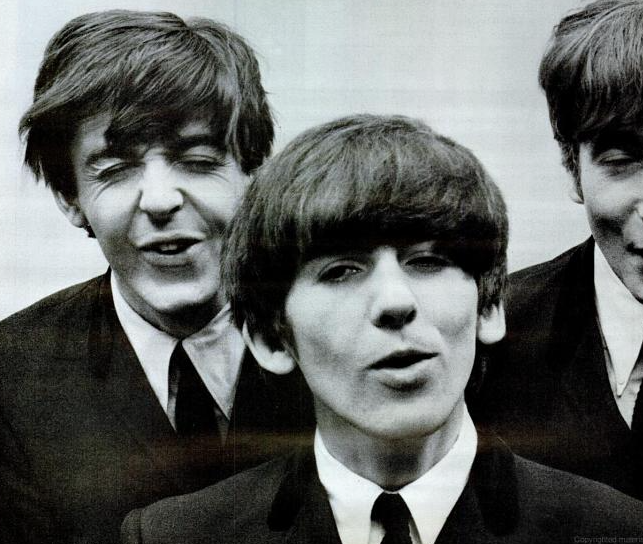Blog
-
Read more »
Exerpt from the February 14, 1949 Life Magazine
At 4 a.m. one morning last November at Boeing's Seattle plant a huge tarpaulin-covered shape was rolled out to the test areas under armed guard. The shape under the canvas was that of the Air Force's newest and world's biggest jet bomber, the XB-52, a 350,000-pound plane built on lines of a jet fighter. In the drawing above, Artist John T. McCoy shows the power and beauty of the plane which is the culmination of 35 years of progress in U.S. military aviation. In the drawings on the following pages, McCoy traces the ancestry of the XB-52 back to the wood-and fabric biplanes of World War I, then shows the developments of the fighter from the Spads bought from France in 1918 to today's 700-mph jets and illustrates how far the Navy has come from its 85-mph flying boats. The untested XB-52, still far from the production line, will be of no immediate help to the Air Force. It will do nothing to alleviate the frightening shortage of every type of combat plane, which the lagging rearmament program has brought about. But when, in three or four years, it is in mass production, the XB-52 should be an extraordinary weapon. Into it will go the top secret devices of the Air Force. In its nose will be a radar bomb sight designed to hit targets with visibility zero from altitudes higher than 10 miles. Under its wings are slung eight newly developed J-57 turbojets whose thrust, equivalent to about 80,000 hp, will drive the XB-52 at around 550 mph. In its fuselage are immense fuel tanks which, fed by flying tankers, will make the XB-52 an intercontinental bomber. Click Link Below to Read Full Article.
Full Article on Google Books | Visit the Archives
-
October 03, 2019Read more »
Exerpt from the February 14, 1949 Life Magazine
"Dunkirk Beaches" painted by Richard Eurick
In June 1940 the name of Dunkirk haunted the world. A sweeping German pincers movement, bursting through collapsing France and Belgium, had caught and pinned virtually all the British Expeditionary Force against the sea. On Dunkirk's broad beaches men as well as equipment seemed doomed beneath a rain of German fire and bombs. Rescue operations began immediately although Mr. Churchill himself dared not hope that more than a fraction of the army ANOTHER DUNKIRK was the evacuation from Corunna in Spain during Peninsular War, an attempt to dislodge Napoleon from Portugal and could be saved. But from England there put out a motley fleet of warships, tugs, yachts, small craft of every kind and, in Io days, they carried more than 338,000 British and French soldiers back to England. The miraculous evacuation recalled another time when a British army had been swept to the sea at Corunna in Spain, 131 years before. Then, in January 1809, a British transport fleet had snatched some 14,000 of Sir John Moore's troops from the forces of Napoleon. Spain. This old print, sketched on scene, shows British transports in Corunna harbor, a relatively peaceful sight in days before aircraft and high explosives.
Full Article on Google Books | Visit the Archives
-
October 03, 2019Read more »
Exerpt from the July 7, 1947 Life Magazine
A Unique Personal Record
I have often thought in reading the history of our country how much is lost to us because so few of our Presidents have told their Own Stories. It would have been helpful for us to know more of what was in their minds and what impelled them to do what they did. The presidency of the United States carries with it a responsibility so personal as to be without parallel. Very few are ever authorized to speak for the President. No One can make decisions for him. No One can know all the processes and Stages of his thinking in making important decisions. Even those closest to him, even members of his immediate family, never know all the reasons why he does certain things and why he comes to certain conclusions. To be President of the United States is to be lonely, very lonely at times of great decisions. Unfortunately, some of our Presidents were prevented from telling all the facts of their administrations because they died in office. Some were physically spent on leaving the White House and could not have undertaken to write even if they had wanted to. Some were embittered by the experience and did not care about living it again in telling about it. As for myself, I should like to record, before it is too late, as much of the story of my occupancy of the White House as I am able to tell. The events as I saw them and as I put them down here, I hope may prove helpful in informing some people and in setting others straight on the facts.
Full Article on Google Books | Visit the Archives
-
October 03, 2019Read more »
Exerpt from the July 7, 1947 Life Magazine
America The Beautiful
The Fourth of July, although it originated in the hot spirit of defiance and the powder smell of revolution, is a quiet holiday. In the small cities the crowds gather beneath bunting and flags to Watch their parades. In the picnic grounds the orators sweat and strain to produce three cheers for liberty. Yet everywhere, as in the Cheyenne street scene on the opposite page, the crowds are in shirtsleeves and cotton dresses, relaxed, having a good, long, easy day, taking their liberty for granted, a little embarrassed by all the fancy talk. In the cool of the evening many Americans will express their unself-conscious patriotism in the thought, "This has been a pleasant day and this is a pleasant land.” For in early July, on the nation's birthday, the land is at its best. The ice has long been out of the northern lakes, yet the summer's full fury has not yet descended on the countryside. America, as the color photographs on the following 12 pages show, is a land of vast, calm beauty and of people who are outdoors enjoying it.
Full Article on Google Books | Visit the Archives
-
October 03, 2019Read more »
Exerpt from April 2, 1945 Life Magazine
Kirk Douglas as Van Gogh
From bristly red beard to crazed blue eyes the Vincent van Gogh portrayed by Kirk Douglas (p. 62) in MGM's fine new film, Lust for Life, is the Van Gogh of his own self-portraits. The life story the movie tells is set against the glorious color of Van Gogh’s great art—the pool hall, drawbridge and cafe at Arles, the wheat fields of north central France, the now familiar scenes that in reproduction decorate thousands of American walls. Van Gogh was stubborn, quarrelsome, gifted. Born in Holland, he drifted southward, fighting with everyone, the women who loved him, fellow painters, landlords. In Arles, under Provence's burning sun, he painted the blazing canvases that made him immortal. And there he went mad. He cut of an ear and left it in tribute at the door of a brothel. He spent a year in a madhouse painting prodigiously. And free again in his 37th year, he went into a wheat field and, in a fit of depression, ended his stormy life.
Full Article on Google Books | Visit the Archives
-
October 03, 2019Read more »
Exerpt from December 13, 1943 Life Magazine
Nation Drinks What it Can as Favorite Spirit Grows Scarce
Throughout the U. S. last week, liquor-store proprietors gave customers the once-over. For a steady patron, one bottle of whisky might appear furtively from under the counter. Strangers walked out with rum, brandy or gin. In New York the FBI nabbed a gang of thugs in the act of hijacking more than 1,200 cases of whisky. In back rooms and loft buildings, Federal raiders dismantled illicit stills and poured bootleg liquor down drains. It was sort of like old times. A fortnight after the start of a Senate investigation of the liquor situation, a bloc of the nation's distillers took big ads in major city newspapers from coast to coast to explain why whisky was hard to get. Now held in storage are about 303,000,000 gallons, of which 100,000,000 must be held for post war reserve. Should the remaining 203,000,000 be thrown on the market they would vanish, the distillers estimated, in less than a year-hence voluntary rationing. As Christmas approached, parched Americans began gulping rum, brandy, imported gin. Even these might dry up soon.
Full Article on Google Books | Visit the Archives
-
October 03, 2019Read more »
Exerpt from January 18, 1943 Life magazine
Iowa's No.1 artist who died last winter gets big retrospective show in Chicago
Last February Grant Wood died. Last October the Chicago Art Institute put on a big retrospective show of his works, some of which are reproduced on these pages. No sooner had the Art Institute doors opened than the battle over Wood's paintings began again-a battle that had been raging among art lovers ever since Wood first returned home from Paris in 1929 to paint his stern-faced neighbors and the countryside of Iowa, where he was born and brought up. Those who do not like Grant Wood’s paintings are violent in their disapproval. Some critics contend that Wood had no taste, that his work was oppressive because of its coldness and lack of emotion. Others acclaim him as the great messiah of modern American art and place him on a pedestal as one who dared turn his back on French influence and dared paint the homely scenes of America's Midwest. Wood always regarded himself as an artist with something important to say about a variety of subjects. His Daughters of Revolution was his factual comment on an organization that was being generally criticized for being reactionary instead of revolutionary. His Death on Ridge Road sprang from Wood's desire to deliver a message on U. S. automobile fatalities. Though he had something to say about the Ancient Arabic Order of the Mystic Shriners and its behavior and collected much material on that group, he never got around to putting his words and ideas into paint. Yet for all the controversy that whirled about him, Wood remained, until his death at 50, a gentle and mild-mannered man little concerned with the opinions of the World outside those of Iowa. A neighboring farmer's approval of one of his pictures meant more to Wood than all the acclaim of worldly art critics,
Full Article on Google Books | Visit the Archives
-
October 03, 2019Read more »
Exerpt from May 24, 1943 Life Magazine.
Trip to a Pennsylvania Farm
Spring came late to much of the U. S. soil this year. In Lancaster County, Pa.. the month of April felt like March, and the first few days of May were like a cold and cloudy April. Then, within the last fortnight, the tardy spring came racing up the Shenandoah Valley from the South. Apple orchards burst into foamy pink-and-white bloom around the fat Lancaster County barns (see above) and spic-and-span farmhouses. Tractors and teams crawled across the Lancaster County fields, churning the limestone-bedded soil into a carpet of soft, deep loam. In the barnyards pungent clouds of steam rose where farmers were gathering up the winter's deposit of precious manure (see meat page). The pictures on this and the following pages show how the spring of 1943 looks in Lancaster County, richest farming county east of the Rocky Mountains. (Los Angeles County, Calif., which has a far more favorable climate, is first in agricultural production per farm acre: Lancaster is second.) Spring in Pennsylvania has a different look than spring in California or spring in Kansas. But wherever it is and whenever it comes, spring on the farm always finds men and animals and weather working together to renew the riches of the earth.
Full Article on Google Books | Visit the Archives
-
October 03, 2019Read more »
Exerpt from April 2, 1945 Life Magazine.
Ernie Pyle. America's Favorite War Correspondent.
“I got awful sick of Pyle this last year," an ordinarily amiable gentleman remarked recently. "The whole country's so intent on making him a god darned little elf I don't understand it How people can get all tied up in Pyle is beyond me." The speaker was Ernie Pyle's oldest friend and college classmate, Paige Cavanaugh. His job at the moment is to make sure that The Story of GI Joe, a movie about the infantry as seen through Ernie's eyes, does not overly glamorize its journalist hero Cavanaugh is bored by the apotheosis of Pyle and has said so in writing. In a letter to Ernie, he announced, "I have completed my plans for the postwar world and I find no place in it for you." Certain differences between the public's conception of Pyle and his own knowledge of the subject provide Cavanaugh with much tart amusement, By his articulate admirers Ernie has come to be envisaged as a frail old poet, a kind of St. Francis of Assisi wandering sadly among the foxholes, playing beautiful tunes on his typewriter. Actually he is neither elderly, little, saintly nor sad. He is 44 years old, stands 5 ft 8 in tall; weighs 112 lb., and although he appears fragile he is a tough, wiry man who gets along nicely without much food or sleep. His sense of humor, which leavens his columns with quaint chuckling passages, assumes a robust earthy color in conversation. His laugh is full-bellied. His profanity is strictly GI. His belch is internationally renowned, "Ernie is the world's champion Belcher," a friend once remarked enviously. " He doesn't burp, he belches. It’s not a squashy, gurgly belch, but sharp and well-rounded, a clean bark with a follow-through. It explodes." Although Pyle is America's No. 1 professional wanderer, he is fundamentally a sedentary person who likes nothing better than to sit in an overheated room with a few good friends.
Full Article on Google Books | Visit the Archives
-
October 03, 2019Read more »
Exerpt from January 28, 1952 Life magazine
10 Year old Girl Is youngest to Fly Alone
Ten-year-old Betty Lee Bennett has been up in the air a good part of her life. When she was six months old her father. Alfred Bennett, who is vice president of the Taylorcraft light-plane company, took her up for a ride. and at 3 she tried the controls. Last September she began training to solo, first by driving the family car around an open field by herself, then by taxiing a plane around an airport for hours. Almost every day her father gave her a lesson and two months ago he felt she was ready to fly alone. The actual flight, which took place in Cuba because 16 is the minimum age for solo flying in the U.S. made Betty Lee the youngest solo flier on record. LIFE photographed her slight by setting up a robot camera in the plane: each time Betty Lee moved the aileron controls she took her own picture. The 10-minute slight was perfect. During it. Betty Lee seemed completely calm–far calmer than her father, who, though he insisted he was not nervous, suffered an understandable attack of fatherly fidgets.
Full Article on Google Books | Visit the Archives


